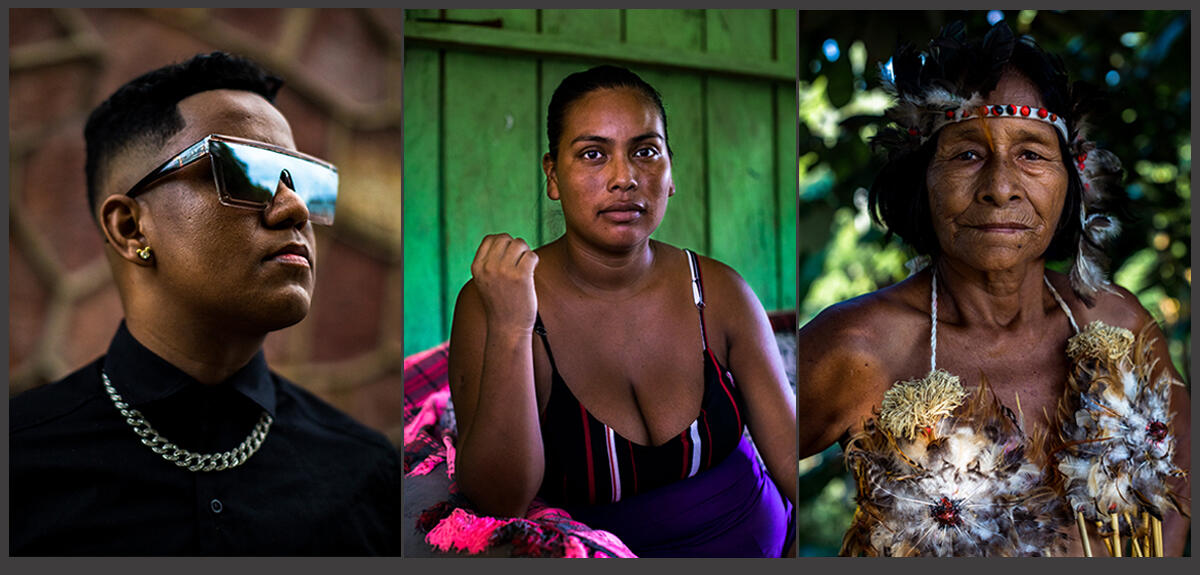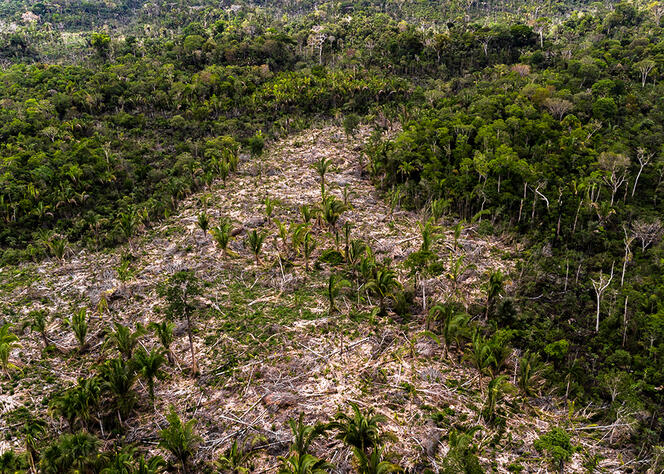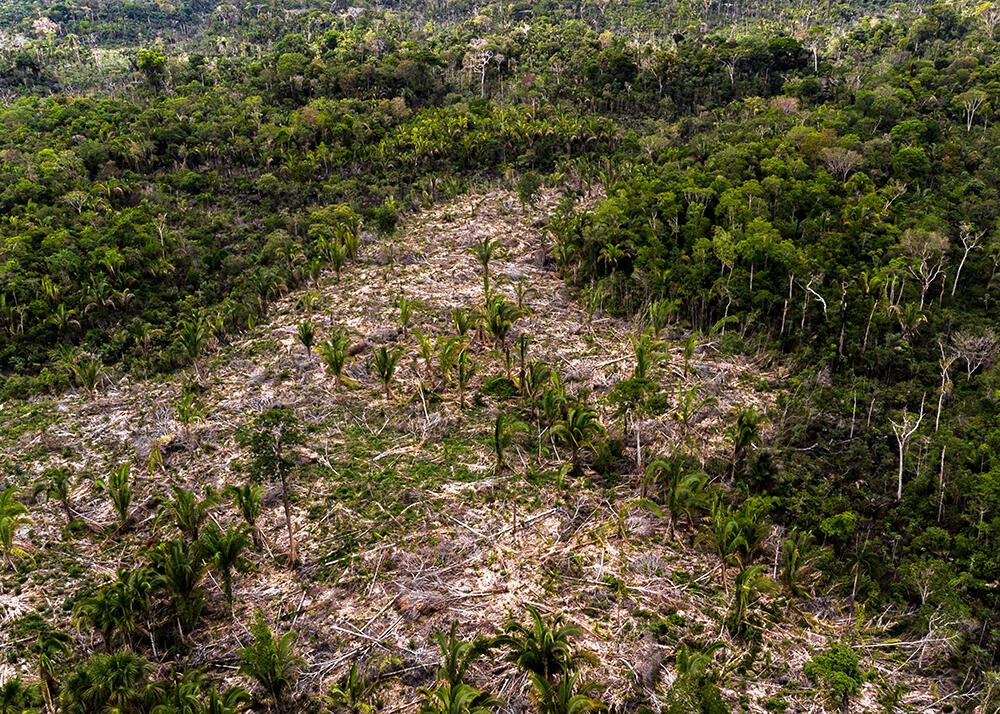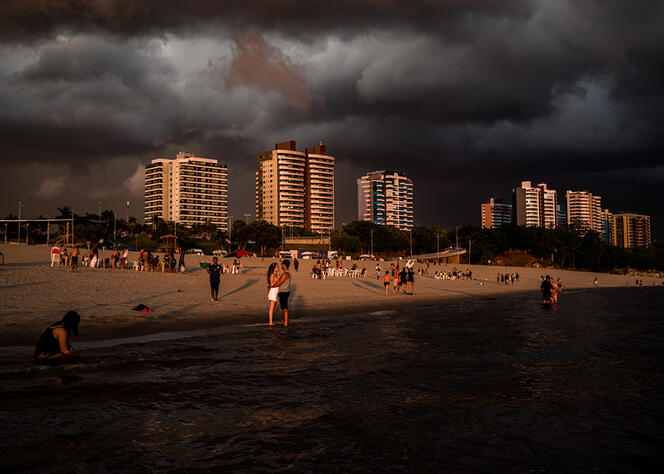You are here
Amazonians face the dilemma of deforestation

Your project is called Amazonas, after the Brazilian state of the same name. What does it involve?
Lauriane Mouysset:1 The project is about deforestation in the state of Amazonas, located in the Amazon basin (covering a territory of 7 million km2, of which 5.5 million km2 is forest). My project tries to lend a voice to a population that is largely invisible in the debates surrounding the deforestation of the Amazon, namely those who live in the Basin without necessarily being at the heart of the forest. For example, this is the case for Manaus, the capital of Amazonas, a genuine megalopolis with a population similar to that of Paris. Today the media broaches the issue of deforestation in the region either through the prism of international climate negotiations on a planetary scale, or from that of the lifestyle and culture of indigenous peoples. These two aspects are very important, but stopping there sidelines all of the other inhabitants in the region.
Why did you choose to involve a photographer?
L. M.: Amazonas was conceived from the start as an ‘art and science’ project, in collaboration with the documentary photographer Emeric Fohlen.2 I wanted to use this artistic addition to illustrate how the primary objective of scientific research is to improve our understanding of fragments of our society, and of the nature in which we live.
However, our work in connection with Amazonas is based on scientific models, which implement a series of mathematical equations that imitate the behaviour, processes, and reactions of the real system. This carefully assembled whole forms a simplified system that can reproduce the dynamics of the real one. However, these scientific models have a reputation of being austere, and especially disconnected from the reality they are supposed to represent. This causes misunderstanding, frustration, and even suspicion among the general public, thereby limiting the dissemination of the knowledge they otherwise help to create.
It is precisely to combat these pernicious effects that I decided to initiate this scientific project on the inhabitants of the Amazon basin at the intersection of photographic practice.
In your study, what do these Amazonians think of the deforestation of the Amazon?
L. M.: We interviewed 197 inhabitants from the state of Amazonas, asking them about their interest in deforestation, as well as their relation to the nature around them.
Their position is not an obvious one, as they suffer from the environmental degradation of deforestation, such as soil erosion and the deterioration of ecosystems, but at the same time, deforesting provides both new land and economic development. In the face of this dilemma, it is indispensable to hear the voices of these inhabitants of the Amazon. Our study has revealed that on the whole, the population interviewed is opposed to deforestation.

This result suggests that Amazonians tend to be in disagreement with the recent national deforestation policy in force under Jair Bolsonaro. But it is only an average: some of those surveyed claimed to be highly concerned by deforestation, while others were not at all.
How should this diversity of viewpoints be interpreted?
L. M.: These heterogeneous answers reflect the great diversity of geographic and sociological situations. Everyone has their own references for understanding the issues connected with deforestation. However, the answers can be unexpected. I’m thinking, for example, of 18-year-old Dante, a student in Manaus, whom I met while he was out skateboarding. He is up to speed with the latest trends in fashion, sports an American look, and admits he’s never been to the Amazon forest surrounding his city. However, he is very concerned by excessive deforestation, which he strongly opposes. Marivaldo, a 69-year-old fisherman who uses his boat to transport people on the Amazon River, says he very much cares about the integrity of the forest, although he understands why his fellow citizens leave for the city in search of a better salary, and is aware of the potential impact of such economic development on the level of deforestation.
Is this heterogeneity of opinions the result of chance, or can certain sociological features be outlined?
L. M.: Yes, this is what statistical analysis of the answers points to. Education apparently has a strong positive impact on the importance given to the fight against deforestation. However, other effects are more surprising. For example, the study shows that there is a gender effect, one that is contrary to the traditional preconception that women are more sensitive to care-related issues, and therefore more favourable to protecting nature. In this case they appear less worried than men about deforestation. This lack of interest could result from their more limited access to both property in the region (only 30% of landowners are women), and to financial and technical assistance in connection with climate change (women make up a mere 5% of recipients). It seems that as a result of this marginalisation, they are less informed about deforestation issues, and thus less sensitive to the cause. We are also surprised to find out that there is no generational effect: younger individuals do not appear to be more concerned than older ones, and vice versa.
How can these results concretely be used by actors combatting the deforestation of the Amazon?
L. M.: A majority of inhabitants of the Amazon basin – and not just indigenous peoples – is interested in the issues surrounding the struggle against deforestation.
The Amazon population could thus serve as a go-between for combatting the phenomenon. For example, international institutions could be more effective if they joined forces with all Amazonians, including urban ones. Our sociological analysis also suggests that it is possible to more effectively arouse interest in the fight against deforestation by focusing on certain sociological groups, such as those with no college education, while giving special attention to women.
In addition, the study shows that there is a discrepancy between the level of deforestation that those interviewed consider acceptable, and the actual commitment they are ready to make to achieve this goal. Such commitment could take the form of forest-friendly agricultural practices, political action to spread pro-forest messages, etc. Using a bioeconomical model based on real data related to forest surface area and agricultural income in all municipalities in Amazonas, we show that this divergence could endanger 300,000 km² of forest in the state’s territory. Communicating this figure would help make some measures more socially tolerable, such as taxes levied by the central government to improve forest monitoring systems.
Further reading AMAZONAS (link is external) (in French), Emeric Fohlen and Lauriane Mouysset, Presses des Ponts, forthcoming in July 2023, 250 p., 25 euros, ISBN 978-2-85978-558-1
- 1. Lauriane Mouysset is a CNRS researcher in ecological economics at the CIRED international centre for research on the environment (CNRS / Cirad / École Nationale des Ponts et Chaussées / AgroParisTech). Her work is at the intersection of ecology, the economics of biodiversity, and environmental ethics.
- 2. The French documentary photographer Emeric Fohlen is interested in the identity of peoples and environmental issues. He focuses on the relations that humans have with forests in different places across the globe (metropolitan France, Ireland, Brazil, Guyana, etc.). His work has been presented in festivals and exhibitions in France and abroad, including “Visa pour l’Image”, the “Friche de la Belle de Mai”, “l’Orangerie du Sénat”, and at UNESCO headquarters.
Author
Specializing in themes related to religions, spirituality and history, Matthieu Sricot works with various media, including Le Monde des Religions, La Vie, Sciences Humaines and even Inrees.















